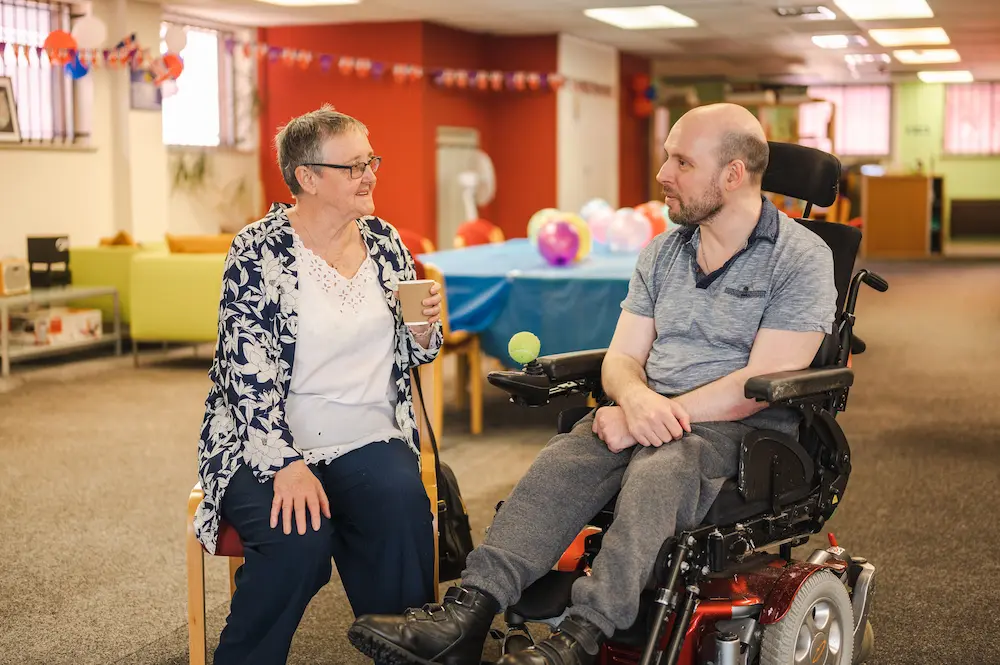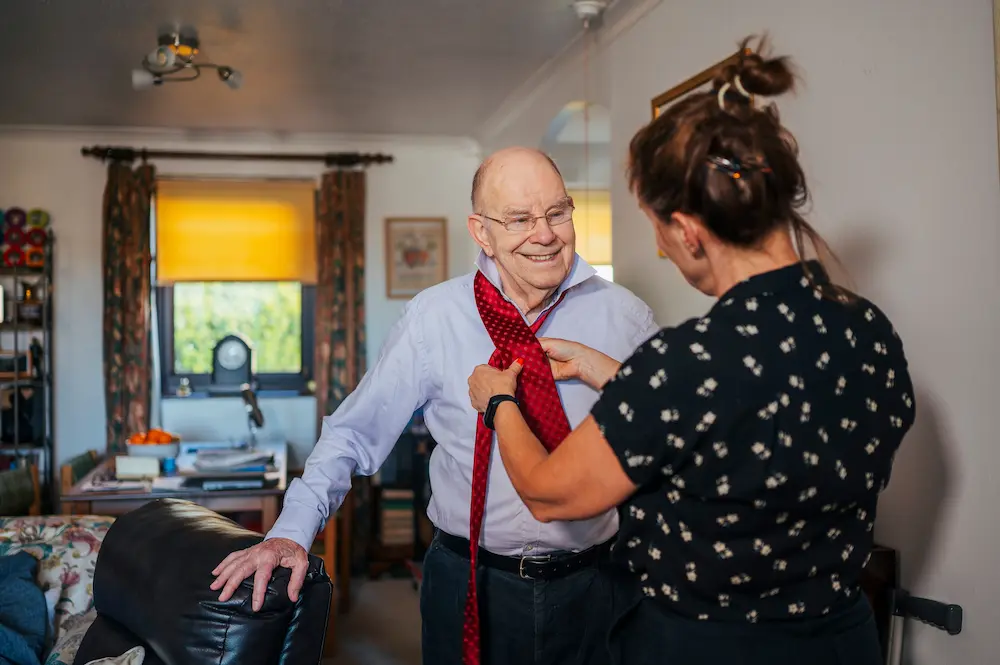D2A: What is Discharge To Assess?

Estimated Reading Time: 8 minutes
There are times when a person can be ready to leave the hospital but not yet well enough to return to their previous place of residence. In this situation, patients will be discharged through the Discharge to Assess (D2A) pathway into a nursing home so they can continue receiving additional support and further assessment.
Here, we’ve explained the importance of D2A, how a D2A pathway works, the assessment process and how to find ongoing support.
Browse recommended local homes
Compare care homes with availability near you.
In this article on discharge to assess (D2A):
- What is discharge to assess?
- Why is D2A important?
- D2A pathways
- How long does D2A funding last?
- How are you supported during the interim placement?
- The assessment process
- Reablement
- Finding ongoing support
What is Discharge To Assess (D2A)?
Discharge to Assess (D2A) is all about funding and supporting people to leave the hospital when it’s safe and appropriate to do so. Once they’ve left the hospital, the goal is to continue their care and assessments, so that any support can be put in place for long-term care needs.
Discharge to Assess is needed when a patient is able to leave the hospital but isn’t necessarily well enough to return to wherever they were previously living.
When this happens, you’ll be discharged through the Discharge to Assess pathway into a nursing care home where you’ll receive additional support and any further assessments.
Why Is D2A Important?
Spending longer than necessary in the hospital can put you at risk of losing some of your strength and mobility. You may also develop an infection.
Once your medical treatment is over, the best environment for recovery is out of a hospital and in a different care setting.
Health and social care will support you or your loved one following your discharge. Often, local councils will make arrangements for you to be cared for in a care home for a short period (usually up to six or so weeks).
We offer a number of care homes with D2A beds, including:
Amherst Court Care Home in Chatham
Norfolk House Care Home in Weybridge
Alice Grange Care Home in Ipswich
Prince George House Care Home in Ipswich
Acton Care Home in London
Trinity Manor Care Home in Sherborne

What is a D2A Pathway?
During your hospital admission, staff will identify which D2A pathway will support your discharge when you’re well enough to leave. There are four main pathways. The pathway you or your loved one are placed on will depend on how much care and support is still needed after leaving the hospital.
The four potential Discharge to Assess pathways are:
Pathway 0 - Fully independent, a simple discharge with no formal input from health or social care required once home (around 50% of people go down this pathway)
Pathway 1 - Support is provided for you to recover at home. You’ll be able to return home with support from health and/or social care services (around 45% of people go down this pathway)
Pathway 2 - Rehabilitation or short-term care in a 24-hour bed-based setting (around 4% of people go down this pathway)
Pathway 3 - Ongoing 24-hour nursing care is required, often in a bedded setting. In this instance, long-term care is likely to be needed (around 1% of people go down this pathway)
We’ve gone over each of these in more detail below:
Pathway 0 - Fully independent
Here’s what usually happens during Pathway 0:
- The patient returns to their normal place of residence (including a care home)
- They’ll then be fully independent, with no additional support required
- Any former care package restarts with no changes
- Similarly, any pre-existing care services will remain as they were
Pathway 1 - Interim care and support
During Pathway 1, you’ll return to your usual place of residence with interim support (a temporary form of care). You’ll either be given a new care package or see an increase in the level of support provided in your existing care package. You may also receive temporary reablement (a form of intermediate care) to maximise your independence in care.
Within Pathway 1, additional care and support could include therapy, specialist equipment, nursing care and domiciliary care.
The exact process of returning home through Pathway 1 depends on your local authority or other health and social care service. Usually, you’ll be given a 72-hour period in which a team of professionals will assess your support needs once home.

Pathway 2 - Inpatient rehabilitation
Through Pathway 2, a patient will be transferred and receive rehabilitation and regular assessment until they’re able to safely return home. This type of short-term bedded rehabilitation could be with or without reablement and assessment.
When discharged through Pathway 2, you’ll receive an assessment to identify any discharge needs that’ll then be discussed with you and your family or main carer. This may include arranging a care home placement or package of care.
Once this period is over, you’ll then either be offered reablement or an ongoing package of care.
Pathway 3 - Complex needs
This is the least common pathway, with only around 1% of people going down it. Here, you’ll be transferred to a new long-term place of care or your usual residence and receive an assessment for your needs. This longer-term placement is normally needed if you or your loved one have significant health care needs, mental health needs or require compassionate end of life care (often in a palliative care home).
How Long Does D2A Funding Last?
This depends on the individual organisation providing the D2A funding - this will likely be provided by a health and social care service, such as a local council or authority.
An estimated half of people should be fully-funded for up to six weeks of care. The other half will be discharged from the hospital and not require any formal input from health or social care once they’re home.
How Are You Supported During the Interim Placement?
Whilst in a care home, your care and support needs will be assessed, ensuring any long-term needs are met. Your social worker and/or nurse will help out with the process.
An approved care home in your local area will then be chosen for this short stay. The exact process varies from council to council, but the likely course of action is that a member of your local council’s health and social care team will work alongside you and your family to support your move into this care home.
The Assessment Process
The first and main goal of Discharge to Assess (D2A) is to work with you and your family or carer to support you in achieving your recovery goals, so you can return to the place you usually live.
During your time in a nursing home, physiotherapists and other members of the care home team may provide ongoing support and therapy.
If you aren’t able to return home and be independent or a package of support can’t be provided for whatever reason, your local authority will work with you, your family or your carer to decide what the best place for you to live is. You may end up permanently living in a care home - such as a nursing care home or residential care home. Here, staff will be able to provide a superb level of care and look after your everyday needs.
Reablement
Reablement is an intensive home care service provided by trained support staff who will regularly attend your home - potentially one to four times a day - to help you work towards getting your independence back after a period of ill health. Through reablement, you’ll be able to remain living safely at home while managing day-to-day activities like washing, dressing, preparing meals and managing any medication.
Reablement is a service you may be offered after an initial assessment period as part of the discharge to assess pathway.
Reablement is a short-term service that typically lasts two to four weeks, but can last as little as a few days or up to six or so weeks if needed.
Several local authorities offer this, including Rutland County Council, who are registered with the Care Quality Commission.

Reablement services
Generally, reablement services are free of any financial charge, as long as you’re receiving reablement support. Again, this could be just a single day, a couple of weeks or up to a maximum duration which is often around six weeks.
You’ll be visited at home by a therapy member from your local council following your hospital discharge. They’ll work with you to identify how to best support you in working towards achieving more independence.
This could include:
- Minor equipment provision and adaptations
- Setting specific (or general) reablement goals
Goals will often be recorded in a reablement plan and regularly monitored.
Reablement goals
Reablement goals could include being able to:
- Prepare basic meals without help
- Prepare hot and cold drinks without help
- Manage your own medication
- Wash, bathe or shower independently, depending on your level of mobility
- Get dressed and undressed without help
- Do your own shopping
- Generally improving indoor and outdoor mobility
Finding Ongoing Support
We understand that discharge from the hospital can be a difficult time for the person receiving care, as well as their family and friends.
There’s plenty of support available to help you or your loved one through the discharge process. You should speak to ward staff or your social worker if you have any questions or concerns.
Often, a financial assessment will be completed to establish if you need to make a financial contribution towards your care costs - including care home costs.
In this case, a social worker will need to complete a care needs assessment and work with you to agree on a care plan and care package.



